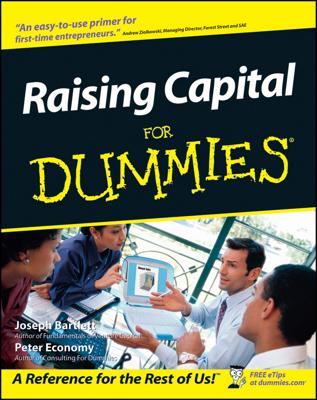The opening section of your grant application for funding is all about your organization. The focus is on the problem your organization wants to solve, where your organization is located, what your organization has accomplished, and what your organization is doing now. This section is a key ingredient of your recipe for winning grants.
Utilize groups of three in your grant app
Research shows that groups of three are effective in getting your audience to remember an important point. The groups of three tactic is a way to make a memorable impression with the words you choose. The words that stick in your mind forever usually come in groups of three. Some examples: blood, sweat, and tears; reading, writing, and arithmetic; and red, white, and blue.
An example of this tactic applied to grant writing terms looks like this:
The Magic Carpet Arts Project is based in Oz, Wonderland and was founded in 1988. Our mission is to provide homeless persons with an artistic outlet for sharing their story from traditional society to living on the streets of Wonderland. The Project focuses on three outcomes: Resiliency, Acknowledgement of Place and Time, and Cause for Homelessness.
In this case, the grant readers get a rhythm of emotionally compelling, telling, and selling words that will be embedded in their minds.
Write about soft cash assets
In the following excerpt, the information suggests that the organization isn’t begging for funding with both hands out; rather, it has some resources or strengths already in place to build upon — a very good situation to be in. The review team is more likely to bestow review points on an organization that already has some assets — not just debts/expenses — in its corner.
The Marathon County Hospital Association (MCHA) has survived multiple financial ups and downs over its 50 years of operation; however, a savvy board of directors and dedicated volunteers and long-time staff members have always been able to identify and secure the critically needed resources to keep our doors open. Patients are our greatest assets! MCHA operates out of a 16-facility campus offering patients pre-admission, admission, and post-admission health care options.
The campus covers 100 acres with 80% of our facilities in Marathon County and 20% in Heath County. State of the art facilities include the new cardiac lab, an imaging center, a burn unit with telemedicine capabilities, the air transport center which has room for six helicopters and two small jets, and a behavioral health complex that can house up to 400 patients (100 secure and 300 non-secure).
Most recently, our foundation completed a $10 million capital campaign to retire 20-year-old debts for our campus. We are ready to start a funding-as-we-build approach with potential funders who will have naming rights. The endowment (established in 1990) has a principal balance of $4 million.
Hit the target with emotion
When you write about your need or the need of your target population, you must stick to the facts. However, there are no hard-and-fast rules on how you present those facts. Write with the understanding that you increase your chances of winning grant awards by touching the hearts of the individuals making the funding decisions.
The bolded text in the following example highlights powerful phrases that you can use in your grant applications to describe any isolated class of people. The reviewer isn’t just reading dry text with facts and statistics; the imagery of escaping something moves him to a new level of emotion.
This is a fact-driven storytelling paragraph for a competitive federal grant opportunity:
The FY 2013+ City of Prescott (COP) YouthBuild Program will serve 66 youth ages 16 to 24 years old. Multiple risk indicators demonstrate the toxic—and often hostile—environment that these youth face on a daily basis. Some of these indicators represent generational disparities among the targeted population.
-
Unemployment Rate
Using the American Community Survey results for the COP, the average of the two age range rates is 23.75% (31.9% for 16–19 year olds and 15.6% for 20–24 year olds using one-year 2011 estimates). The comparable unemployment rate for the same time period was 18.35% (23.4% for 16–19 year olds and 13.3% for 20–24 year olds) The COP’s unemployment rate was greater than the national rate.
-
Poverty Rate
The American Fact Finder poverty rate for Phoenix is 20.3% (percentage living below the poverty level based on a four-year estimate, 2007–2010). The citywide average poverty rate exceeds 15% or more.
-
Graduation Rate
The Education Week geographic map shows the Prescott High School District’s average graduation rate is 61.8%. In January 2013, the U.S. Department of Education reported that Arizona, including the COP, has one of the lowest high school graduation rates and the highest dropout rate in the country. YouthBuild dropout prevention strategies, coupled with previous performance outcome data, are chipping away at the number of residents aged 25+ without a diploma.
Keep the reader focused
Use these general writing rules for keeping your reader on track, with eyes glued to your writing:
-
Use lots of headings and subheadings to guide readers. Remember to adhere to the headings specified in the grant guidelines.
-
Use numbered and bulleted lists. Don’t be afraid to customize your bullets by using clip art or pictures.
-
Keep paragraphs short. Incorporate no more than 7 to 10 sentences in each paragraph.
-
Unless otherwise specified, use a 12-point Times New Roman font. This is the font type and size preferred by 90 percent of grant-making agencies.
-
Stick with one font. Multiple fonts can create a jumbled appearance.
-
Use boldface or italics to emphasize key words and phrases when you want to speak directly to the reader. In particular, use boldface to point out a critical, dire, or urgent risk indicator or demographic.
-
Avoid using all capital letters or writing blocks of sentences in bold, italics, or underlining. You want to lace your narrative with unique formatting; don’t go overboard.

